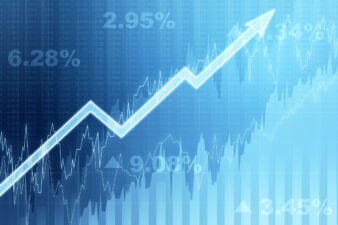Are you trying to max out your Retirement Savings Plan (RRSP)?
It’s a common goal for many Canadians, but it’s not always desirable.
Once you have money in an RRSP, it’s generally locked away for a long time. You technically “can” withdraw the money early, but if you withdraw it while you’re still working, you’re likely to pay very high taxes on it.
One scenario where it may make sense to withdraw RRSP funds early is when you’re saving up to buy your first house. Under the “First-Time Home Buyer’s Plan,” you can withdraw up to $35,000 from your RRSP tax-free. Absent that one condition, you’re going to need to keep your money in your RRSP for a long time if you hope to realize the tax benefits the account promises.
In this article, I will explore one major downside of maxing out your RRSP and what you can do as an alternative.
Your RRSP becomes taxable when you retire
A major drawback of maxing out your RRSP is the fact that the money will become taxable when you withdraw it. If you withdraw the money early, you may end up paying up to a 50% tax on it! Now, the theory is that you’ll be paying lower taxes in retirement, because you’ll only be working part time, if at all. RRSP taxes go off your marginal tax rate, so once your tax rate goes down, so too should the tax rate on your RRSP. However, this ignores many practical realities.
A big one is the fact that your RRSP has to be converted to a Registered Retirement Income Fund, and the funds are withdrawn no matter what. This has to happen by age 72. If you’re still working at age 72, then you may have no choice but to start withdrawing money at a high tax rate. Should you be a very high earner at that point, you may be looking at 50% taxes on your RRSP funds!
Why you should consider a TFSA
If you’re concerned about getting taxed on your RRSP withdrawals, you may wish to consider investing in a Tax-Free Savings Account (TFSA). A TFSA lets you grow your investments tax-free, just like an RRSP does. However, with TFSAs, the money is tax-free on withdrawal, as well as when it’s in the account. If you were 18 or older in 2009 and haven’t opened a TFSA yet, you can deposit up to $88,000 into one of these very generous tax-sheltered accounts.
Some TFSA stocks to consider
If you’re thinking about opening a TFSA, there are many great stocks and funds you can consider holding in one.
First up, we have iShares S&P/TSX Capped Composite Index Fund (TSX:XIC). It’s an index fund built on the TSX composite index. The TSX Composite is an index of the 250 largest companies in Canada. XIC holds 240 of them, so it is very diversified. It has a 0.06% MER (i.e., management fee), which is among the lowest fees of all Canadian stock funds. Finally, it is managed by Blackrock, a reputable fund management company that you can count on to keep your assets safe. All in all, XIC is a worthy fund to consider owning.
Should you want to get your feet wet in individual stocks, you could consider a stock like Fortis (TSX:FTS). Fortis is one of Canada’s most reliable companies. It recently achieved 50 consecutive years of dividend increases, which made it a “Dividend King.” Fortis is one of the only such companies in Canada.
Why is Fortis so reliable? Part of it has to do with the industry it’s in: utilities, in general, have very stable revenue, because heat and light are essential services that people don’t want to cut out of their budgets. There’s more to the story than that, though. Fortis has outperformed the average Canadian utility over the last 10 years, because it has invested heavily in growth and expanded all over Canada, the U.S., and the Caribbean. On the whole, it’s a stock you can count on.
 2-for1 Sale
2-for1 Sale







